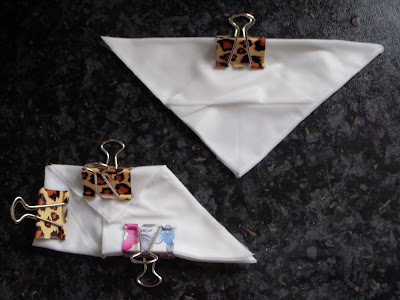Today I am showing you how to create a parfait or layered dyeing. For this I use a glass vase - easier for the pictures, but of course you can use a container or a bucket as well and 4 fq's of cotton fabric. The fabric was presoaked and labelled with small pieces of Tyvek marked 1 up to 4. First a small container was placed into the vase to create a raised platform.
The first piece of fabric was crunched and place on top of the raised platform.
This was covered with some snow.
Dye powder was sprinkled on it
And this was covered with a bit of snow.
This process was repeated till the vase was full.
The colors I used were:
1- Brazilnut (Dharma)
2- Marigold (Dharma)
3- Watermelon (ProChem)
4- Razzledazzle (Dharma)
The vase was left like this till the next morning. After rinsing, washing and ironing this is how the fabric turned out:
fabric 1:
fabric 2:
fabric 3:
fabric 4:
The above fabrics are created with snow. I repeated the whole process with ice cubes using the following dye powders:
1-Robin's Egg Blue (Dharma)
2- Better Blue Green (Dharma)
3- Tangerine (a pure color)
4- Dragon Fruit (Dharma).
And here are the fabrics:
fabric 1:
fabric 2:
fabric 3:
fabric 4:
As you see this technique can be done both with snow or with ice. If I had not marked them, I would not have been able to say which medium I used.




















































